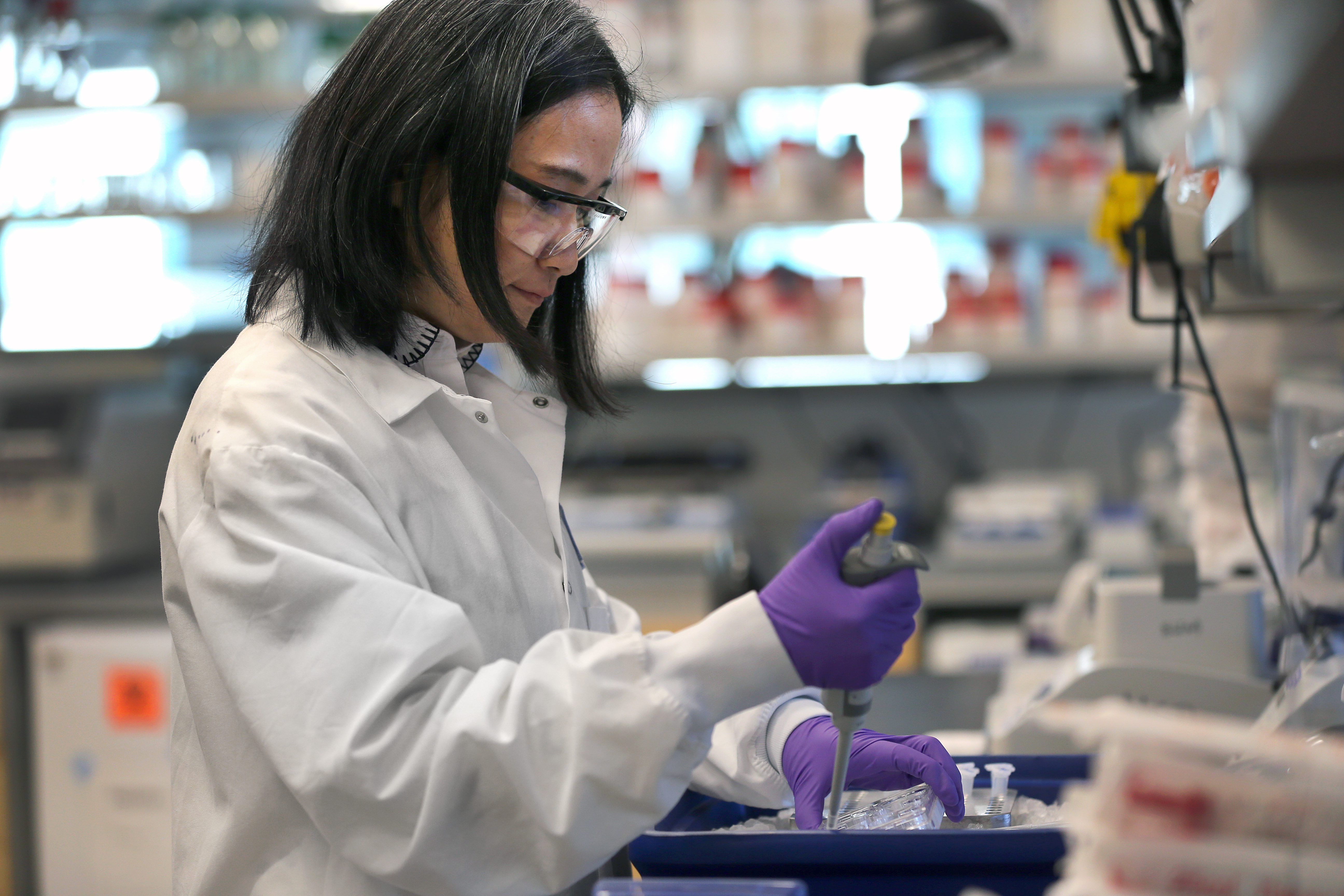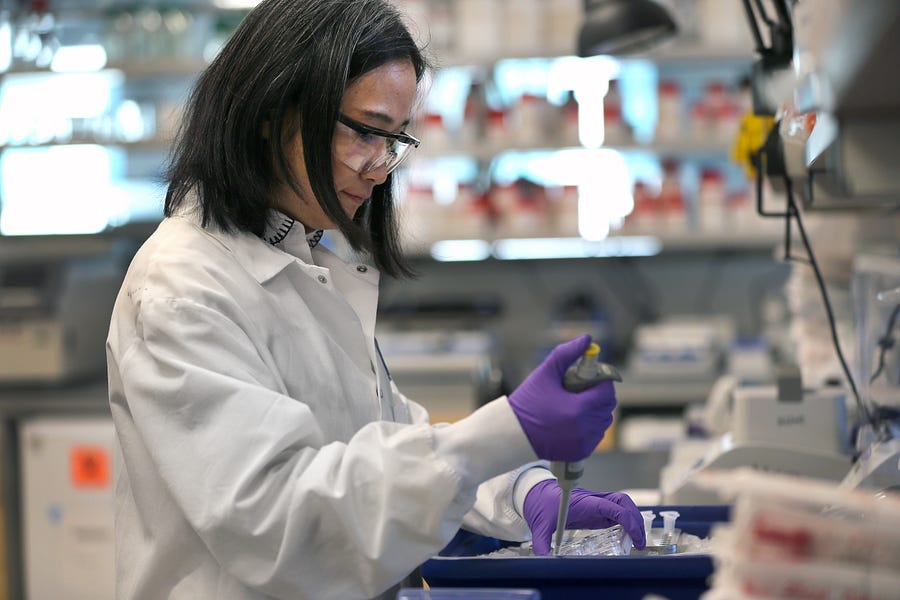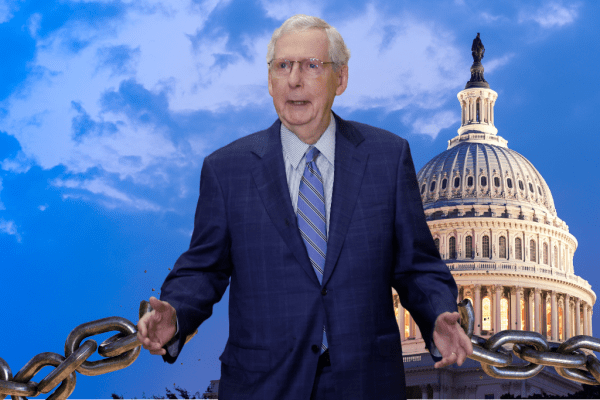Happy Thursday! The Dispatch’s first-rate fact checker, Alec Dent, not only published two Dispatch Fact Checks yesterday (and had a third featured in White House trade adviser Peter Navarro’s bizarre USA Today op-ed attacking Dr. Anthony Fauci), but he “went viral” for the very first time, racking up more than 30,000 likes on his tweet about the coordinated Twitter hacks yesterday.
Quick Hits: Today’s Top Stories
-
As of Wednesday night, 3,499,291 cases of COVID-19 have been reported in the United States (an increase of 67,717 from yesterday) and 137,419 deaths have been attributed to the virus (an increase of 953 from yesterday), according to the Johns Hopkins University COVID-19 Dashboard, leading to a mortality rate among confirmed cases of 3.9 percent (the true mortality rate is likely much lower, between 0.4 percent and 1.4 percent, but it’s impossible to determine precisely due to incomplete testing regimens). Of 42,521,027 coronavirus tests conducted in the United States (756,470 conducted since yesterday), 8.2 percent have come back positive.


-
Several large national retailers, including Walmart and grocery giant Kroger, are beginning to require customers to wear masks to shop in their stores nationwide.
-
A pair of new national presidential polls bring grim news for President Trump: A new Quinnipiac poll shows Joe Biden with a 15-point lead over the incumbent, 52-37 percent, while the latest NBC News/Wall Street Journal survey gives Biden an 11-point edge, 51-40 percent. Biden’s lead now stands at just more than 9 percent in FiveThirtyEight’s polling average.
-
Perhaps related to the last bullet point, Trump moved Wednesday to shake up his campaign staff, promoting Bill Stepien to replace longtime top staffer Brad Parscale as campaign manager.
-
Despite ongoing violence from the Taliban, the U.S. is pressing forward with its plan to withdraw forces from Afghanistan, with the Pentagon announcing Tuesday that U.S. troops have withdrawn from five bases that are now in the hands of Afghan forces.
-
Ruth Bader Ginsburg, who was hospitalized for the second time this year with a possible infection, was discharged and sent home Wednesday.
-
After not endorsing either presidential candidate in 2016, the National Association of Police Organizations—which represents over 240,000 officers nationwide—announced its backing of Donald Trump’s re-election on Wednesday. The organization had endorsed Barack Obama in both 2008 and 2012.
-
Dr. Anthony Fauci pushed back against recent attacks on his reliability that have come out of the White House in recent days, telling The Atlantic, “when the staff lets out something like that and the entire scientific and press community push back on it, it ultimately hurts the president.”
Coronavirus Vaccine on Track for Further Development

From a deadly pandemic to a lockdown-induced recession, 2020 has been a seven-months-long whirlwind of black swan events and public health hysteria. But the world finally got a shred of good news this week: A study showed that biotech company Moderna’s COVID-19 vaccine “induced anti–SARS-CoV-2 immune responses in all participants, and no trial-limiting safety concerns were identified.” Moderna is scheduled to begin a Phase 3 trial with 30,000 patients on July 27, meaning the vaccine is well on its way to regulatory approval.
Phase 1 of the study—which was conducted by the National Institutes of Health—tested 45 healthy young adults in 15-person dose groups and successfully induced an immune response in all participants. According to the study, the vaccine prompted only mild side effects among volunteers, including “fatigue, chills, headache, myalgia, and pain at the injection site.” The vaccine was administered in two doses, which participants received 28 days apart. Phase 3 will expand testing to at-risk individuals and will mark the world’s largest COVID-19 vaccine trial to date.
Preliminary phases of clinical vaccine trials are intended to test the concentration of neutralizing antibodies—also known as titers—in the bloodstream. While Moderna’s vaccine successfully produced this immune reaction in all participants at levels comparable to those found in people who recovered from COVID-19, it’s still too early to say whether this response is predictive of protection from COVID-19.
“No matter how you slice this, this is good news,” Dr. Anthony Fauci, the White House’s top epidemiologist, told the Associated Press on Tuesday. “The hallmark of a vaccine is one that can actually mimic natural infection and induce the kind of response that you would get with natural infection,” he told STAT News. “It looks like, at least in this limited, small number of individuals, that is exactly what’s happening.”
Other epidemiologists’ and vaccine experts’ optimism was more measured. “It may be that you can have high neutralizing antibody titers and not be protected, and it may be that you could have low neutralizing antibody titers and still be protected,” said Dr. Paul Offit, director of the Vaccine Education Center at the Children’s Hospital of Philadelphia. “I just wish there was a little more humility associated with all this.”
Dr. William Schaffner, professor of preventive medicine and infectious diseases at the Vanderbilt University Medical Center, bristled at the notion that a vaccine will be available by the end of this year. “Just think about it. They’re about to initiate a study that includes 30,000 volunteers,” he said. “Conducting a very large study like that and having the data securely obtained, cleaned, and analyzed by the end of the year, that’s exceedingly optimistic and assumes absolutely everything goes absolutely right.” He predicts a vaccine will be ready by the the first quarter of 2021 at the earliest.
Passing the government’s regulatory hurdles is one thing, but efficiently distributing a vaccine to 330 million people is another. Operation Warp Speed—a partnership among components of the Department of Health and Human Services, including the FDA and CDC—was created for this very purpose, and stands by its ambitious goal of delivering “300 million doses of a safe, effective vaccine for COVID-19 by January 2021.”
The World Health Organization is also undergoing plans for mass distribution on a global scale. “Seventy-five countries have submitted expressions of interest to protect their populations and those of other nations through joining the COVAX Facility, a mechanism designed to guarantee rapid, fair and equitable access to COVID-19 vaccines worldwide,” the organization said on Wednesday.
Timeline aside, public health officials and medical ethicists must determine who gets first dibs once a vaccine is ready for broad distribution. According to Dr. Schaffner, the Advisory Committee on Immunization Practices will help weigh in on this question when the time comes. The Committee is scheduled to have its next meeting in October, and “the first agenda item will be a continuation of the discussion of the prioritization scheme.”
Other countries are also making strides in the global race for a vaccine. In China, for example, the Beijing Institute of Biotechnology and biotech company CanSino Biologics jointly developed Ad5-nCoV, which was approved by the government and is undergoing experimental trials among Chinese military personnel.
Domestically speaking, vaccine development is right on track. “The United States government is betting on what they hope are winning horses, and they’re starting actually to invest in the manufactur[ing] of the vaccines even before we know what’s going to work,” Dr. Schaffner said. “In the anticipation that it does work, we will have vaccines in the warehouse ready to go as quickly as possible.” Until Phase 3 of the Moderna vaccine’s clinical trial is complete, the world is on standby.
What Would a President Joe Biden Actually Do?
As President Trump publicly self-destructs on the national stage—the new Quinnipiac University poll released yesterday showing him trailing Joe Biden by 15 point puts Trump’s job approval rating at a dismal 36 percent—the Biden campaign has made the politically savvy decision to maintain a low profile. The gaffe-prone former vice president has remained largely out of sight, so as to keep the spotlight on Trump’s antics, which are proving increasingly unpopular with the American electorate.
But the Biden campaign has quietly rolled out significant components of its policy agenda in recent weeks, giving shape to a picture of what a Biden administration might look like.
In the past week alone, the Biden campaign has released a major $2 trillion climate change plan, a coronavirus recovery agenda, and a surprisingly populist “America First”-style economic platform.
The Biden climate plan, which was announced on Tuesday, would spend $2 trillion over four years investing in green infrastructure and upgrading supply chains, energy grids, and housing units in an effort to “put the United States on an irreversible path to achieve net-zero emissions, economy-wide, by no later than 2050.” The plan—which was surprisingly ambitious, compared to the Biden campaign’s relatively modest pre-existing climate policy agenda—was widely seen as an attempt to make inroads with the progressive wing of the Democratic Party, and was praised by left-wing activists and denounced as too radical by Republicans in the days following its release.
Sierra Club President Ariel Hayes called the plan “bold and ambitious” in a statement, while House GOP whip Steve Scalise (R-Louisiana) said on a Trump campaign call Wednesday that the initiative would cause “higher energy costs and you would see who gets hit the hardest—it’s low-income families.”
Clean energy and reducing carbon emissions also featured heavily in Biden’s “Build Back Better” coronavirus recovery agenda, a four-planked platform that aims to 1) “ensure that the future is made in America,” 2) “build a modern infrastructure and an equitable, clean energy future,” 3) “build a 21st century caregiving and education workforce which will help ease the burden of care for working parents, especially women,” and 4) “mobilize across the board to advance racial equity in America.”
In a speech unveiling the proposal last week at a metalworks factory in Dunmore, Pennsylvania, Biden criticized the president for not living up to his purported “America First” platform. “The truth is throughout this [coronavirus] crisis, Donald Trump has been almost singularly focused on the stock market,” he said. “If I’m fortunate enough to be elected president, I’ll be laser-focused on working families, the middle-class families that I came from.”
The same populist tone carried over to Biden’s “Made in America” economic plan, a manufacturing-focused policy agenda that sounded surprisingly Trumpian notes on trade policy, China, and the American workforce. The plan represents a departure from the free trade approach favored by previous presidential administrations, including Barack Obama’s, in which then-Vice President Biden was a major architect of free trade agreements like the Trans Pacific Partnership, and, decades earlier, NAFTA.
“They are essentially trying to steal the Trump program of 2016 and steal that playbook,” former Trump strategist Steve Bannon, who played a key role in the GOP’s populist turn, told the Washington Post. “For some reason, the White House and the campaign have been caught flat-footed. Biden has very smart people around him, particularly on the economic side.”
The Trump campaign, for its part, castigated the new plans as radical and destructive. “We don’t need to guess what a Biden economy would look like since Americans have been forced to live through it once already,” said Trump campaign spokesman Hogan Gidley. “Biden’s policies caused the slowest economic recovery since the Great Depression, anemic job growth, and depressed wages for the workers left.”
Trump piled on in a rambling speech from the Rose Garden on Tuesday, calling Biden’s agenda “the most extreme platform of any major party nominee, by far, in American history.”
Biden has said that his administration would raise the corporate tax rate to 28 percent, seven points below the 35 percent it was at before the 2017 Tax Cuts and Jobs Act brought it down to 21 percent. Although he has promised on multiple occasions that he would not raise taxes on the middle class, his campaign has declined to describe exactly how he plans to pay for expensive new proposals like the ones unveiled this week.
Worth Your Time
-
In recent days, we’ve talked a lot about the Bostock LGBT discrimination ruling and Our Lady of Guadalupe “ministerial exception” ruling handed down by the Supreme Court at the end of their term. Over at National Review, John McCormack has a great new piece sketching out what the intersection between the two cases is likely to mean for religious liberty in the years ahead.
-
“You know the five stages of grief—denial, anger, bargaining, depression, acceptance?” Dr. Emily Landon asks the New York Times’s Donald McNeil Jr. “I think the American people are in all five of them—but different parts of the country are in different stages.” The piece doubles as a meditation on how some of us have simply become inured to the reality of the pandemic and a historical dive into just how much better the world is at fighting disease now than it was just a century or two ago. Things are bad, but they sure could be worse.
-
Here’s a really wild one: over the last few months, Bloomberg’s Max Abelson has conducted a number of interviews with one of America’s richest men (although which billionaire exactly we’re talking about remains anonymous). Now, he’s given us a sort of ghostwritten journal of what experiencing the pandemic has been like for the ultrawealthy. It’s well worth your time to read.
Presented Without Comment
Toeing the Company Line
-
With Jonah off gallivanting around the Great White North, Andrew joined Sarah, David, and Steve for yesterday’s edition of The Dispatch Podcast to discuss the White House’s bad blood over Anthony Fauci, Bari Weiss’ resignation at the New York Times, cancel culture, and what the current state of the pandemic means for school reopenings next month. (There’s also some very spirited debate about french fries in there.) Give it a listen here or wherever you get your podcasts.
-
Fortunately, Jonah did find time to fire off his midweek G-File (🔒), and it’s an extremely interesting one, digging into how moving all our discourse onto the internet has altered the sorts of actual change we actually strive for: “Just imagine if someone said right after the George Floyd killing, ‘Well, the Redskins are going to have to change their name now!’ Or even, ‘Bari Weiss’s days at the Times are numbered.’ Our political passions are pursuing the path of least resistance—the stuff that’s easy to change.”
-
In this week’s Vital Interests, Tom Joscelyn does what he does best: Gets us up to speed on developments and looming threats that don’t get the day-to-day attention they deserve. This week, he digs into the worrisome growing chumminess between two of our most important global adversaries: China and Russia. “Xi and Putin share a deep-seated animosity for what was once thought of as the American-led world order,” he writes. “They see it as a threat to their countries’ efforts to achieve great power status and, just as importantly, their authoritarian ambitions.”
-
Key provisions of the CARES Act—expanded unemployment benefits, the Paycheck Protection Program, the eviction moratorium—are set to expire in the coming weeks, but unemployment remains at levels unseen since the Great Depression and more than 1 million Americans have filed jobless claims for 16 straight weeks. Declan talked to economists to help explain the moment we’re in, and senators to get a handle on what Congress might actually do about it when they return from recess next week. Spoiler: It won’t come close to in dollars to the $3 trillion package House Democrats passed back in May.
-
Nate Hochman makes the case for offering refuge to those who want to leave Hong Kong in the wake of a harsh new “national security” law that upends the freedoms that residents have enjoyed since the handover from Great Britain in 1997. For one, it’s the right thing to do. For another, if we don’t, other countries will reap the economic benefits.
Let Us Know
Sarah and Andrew talked about this on The Dispatch Podcast yesterday, but we’d love to get your thoughts on it. The media (present company included) talks a lot about “cancel culture,” in part because it disproportionately affects members of our industry. But as Sarah noted yesterday, it’s a “very online conversation. The vast majority of Americans do not know who Bari Weiss is, and they will not know who she is at the end of the week, either.”
Our question to you: Excluding things you’ve heard about or seen in news coverage, can you think of concrete examples of “cancel culture” at work in your own life/community? Or is the media focus on the concept disproportionate to how prevalent a phenomenon it actually is?
Reporting by Declan Garvey (@declanpgarvey), Andrew Egger (@EggerDC), Sarah Isgur (@whignewtons), Charlotte Lawson (@charlotteUVA), Audrey Fahlberg (@FahlOutBerg), Nate Hochman (@njhochman), and Steve Hayes (@stephenfhayes).
Photograph by David L. Ryan/Boston Globe/Getty Images.





Please note that we at The Dispatch hold ourselves, our work, and our commenters to a higher standard than other places on the internet. We welcome comments that foster genuine debate or discussion—including comments critical of us or our work—but responses that include ad hominem attacks on fellow Dispatch members or are intended to stoke fear and anger may be moderated.
You are currently using a limited time guest pass and do not have access to commenting. Consider subscribing to join the conversation.
With your membership, you only have the ability to comment on The Morning Dispatch articles. Consider upgrading to join the conversation everywhere.